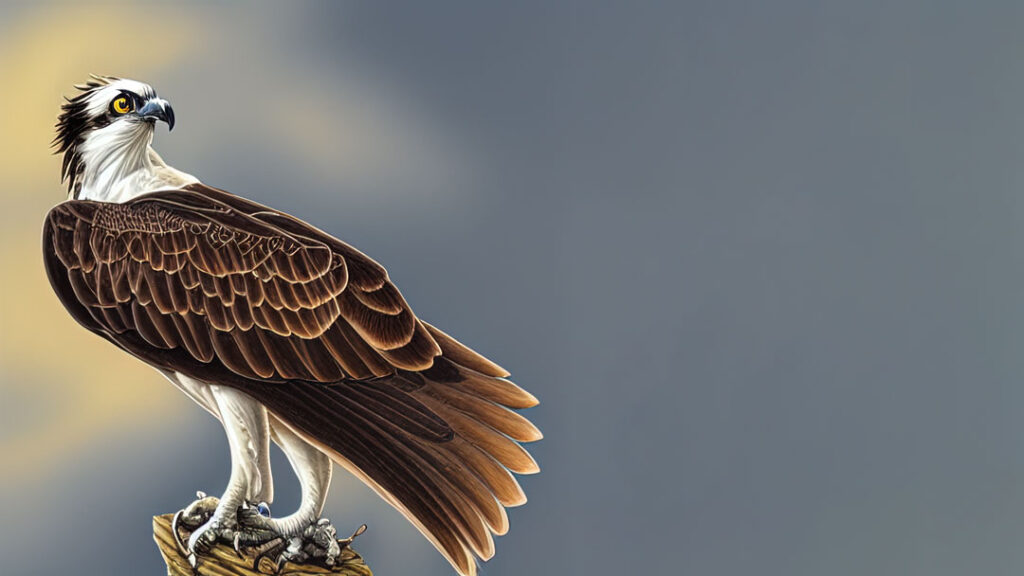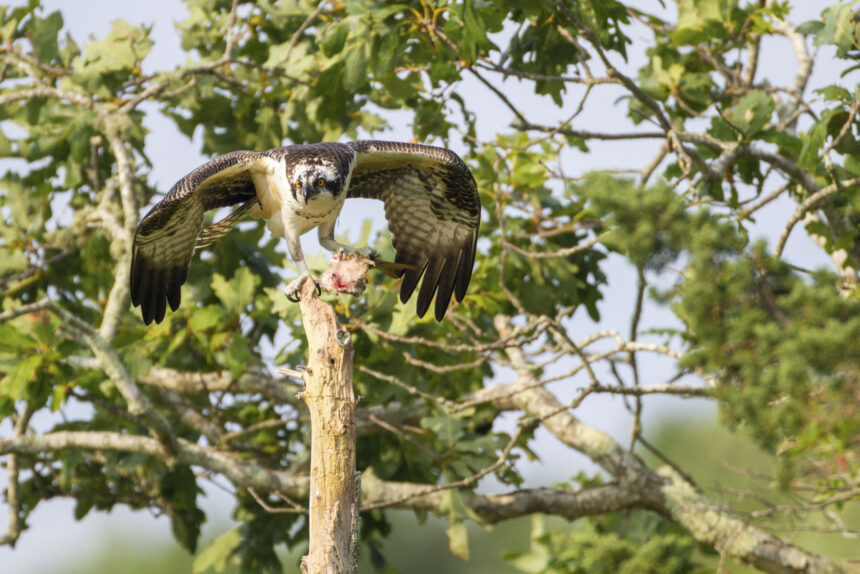Soaring through the Skies; The Osprey
On most Summer afternoons while visiting one of Falmouth’s many top-notch beaches, you may see a rather large bird of prey circling high above you, effortlessly riding the thermals. Chances are, that majestic creature is an osprey.
Ospreys are one of the most widespread birds of prey in the world and can be found on every continent except Antarctica. It is distinct in both its appearance and its species specifications — there’s only one kind of osprey and its facial markings and long elongated wings are tell-tale features.
Buzzards Bay
Two main bodies of water demarcate Cape Cod, giving the Massachusett peninsula its distinct “balled fist” appearance. Cape Cod Bay to the north, and Buzzards Bay to the south.
Originally “Buzzards Bay was first named Gosnold’s Hope by Captain Bartholomew Gosnold. The modern name was presumably given by colonists who saw a large bird that they called a buzzard near its shores. The bird was actually an osprey” (Wikipedia, History, 2022)
Is it a Bird? A Plane?

Ospreys are medium-sized raptors with broad wings and long tails. They have dark brown upper parts and white underparts, with a distinctive black stripe running down each side of their face. Male and female ospreys look similar, although the females are usually slightly larger than the males. These birds typically weigh between 3 and 5 pounds and have a wingspan of approximately 6 feet.
What’s On the Menu
Ospreys primarily eat fish, which they hunt by diving into the water from a height of 30 feet or more. When they see a fish swimming near the surface, they will swoop down and snatch it up in their talons before flying back to their perch to eat it. Ospreys typically eat 1-2 pounds of fish per day, although they have been known to consume up to 4 pounds on occasion!
Home, Sweet Home: Nesting and Breeding
Ospreys generally mate for life, although if one member of a pair dies, the remaining bird will quickly find another mate. These birds typically nest in large trees near bodies of water, using sticks, seaweed, grasses, and other materials to build their nests. Both parents help build the nest and incubate the eggs (of which there are usually 2-4), with the female doing most of the incubating while the male does most of the hunting.
Once the chicks hatch, they are cared for by both parents for approximately 8 weeks before they fledge (leave the nest). For the first few weeks after fledging, young ospreys will stay close to their parents and beg them for food. They will learn to hunt on their own within a few months, although they will remain reliant on their parents for food until they migrate south for the winter (more on that below).
Migration Patterns
Ospreys are migratory birds, meaning that they travel long distances between breeding and non-breeding areas. In North America, ospreys typically breed in Alaska and Canada before migrating south for the winter. Some ospreys stay in Florida year-round, while others travel as far south as South America! No matter where they go, ospreys always return to their nesting grounds come springtime so that they can mate and raise their young.
Fun Facts about Ospreys!
- Ospreys are sometimes called “fish hawks” or “sea hawks” because they eat so many fish.
- These birds have highly reversible outer toes that allow them to grasp prey with 2 toes in front and 2 toes in back.
- Osprey nests are often used year after year by the same pair of birds. Over time, these nests can become massive; some have been known to weigh as much as 2 tons!
- Ospreys can live for 15-20 years in the wild; however, many die young due to pollution, habitat loss, and other human-related causes.


